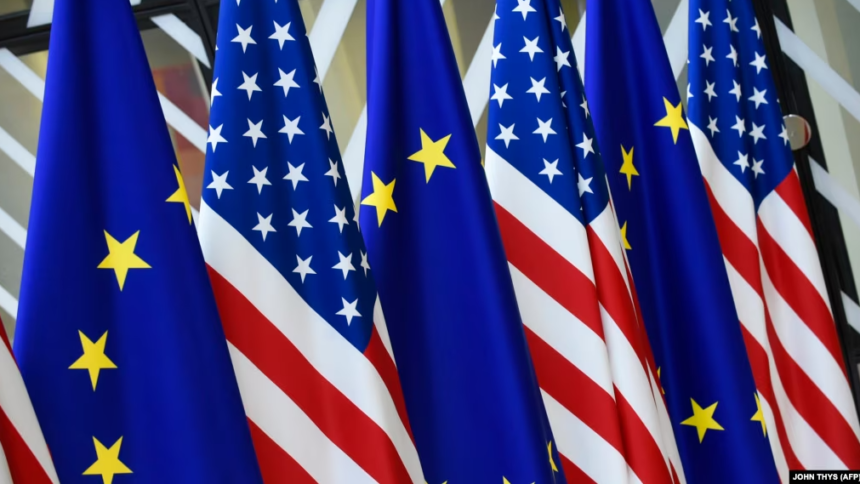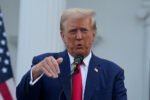Just days after the United States imposed tariffs on goods from Canada, China, and Mexico, the European Union (EU) may be next in line.
On February 2, U.S. President Donald Trump stated that the EU “doesn’t take our cars, they don’t take our farm products, they don’t take almost anything, and we get everything from them,” suggesting that tariffs on the European bloc could be inevitable.
For many officials in Brussels, the question is not if, but when the tariffs will be imposed. According to EU officials speaking with Radio Free Europe, they believe U.S. tariffs could be announced as early as March, with Trump setting April as the deadline for U.S. agencies to investigate “unfair practices.” (EU diplomats rarely speak publicly on these matters and prefer to inform journalists behind the scenes).
In the meantime, EU diplomats are working tirelessly, hoping that a trade deal can be reached. Their strategy is simple: remain calm and focus on U.S. actions rather than statements.
“Let’s see how the market reacts,” one EU diplomat told Radio Free Europe, hoping that the EU’s stance—that a transatlantic trade war would hurt both sides—will be noted in Wall Street, the White House, and Congress.
As EU foreign policy chief, Kaja Kallas, remarked on February 3, “The ones laughing in this situation are the Chinese.”
The stakes are high. Trade and investment between the EU and the U.S. account for 42% of global GDP. Last year, bilateral trade reached 1.6 trillion euros, with Brussels and Washington having over 5 trillion euros invested in each other’s economies.
EU officials hope to defend their position when American officials visit Europe next week. U.S. Secretary of Defense Pete Hegseth is expected to attend a NATO defense ministers meeting in Brussels on February 13. A few days later, U.S. Vice President J.D. Vance and Secretary of State Marco Rubio are expected to attend the Munich Security Conference, gathering global leaders, defense officials, and foreign policy experts.
One card the EU may play is to continue purchasing more U.S. liquefied natural gas (LNG). With Trump allowing additional drilling for oil and hoping to export more LNG, and Europeans wanting to reduce reliance on Russian gas, EU officials hope this could be a win-win scenario for both sides.
Another potential approach is to buy more American weapons. The Trump administration is urging European leaders to increase defense spending, and Brussels aims to invest more in weapons, meaning “U.S. purchases” could be part of the solution.
Allowing major U.S. tech companies like X and Meta, which runs Facebook, to avoid hefty fines for allegedly violating EU regulations on online content could be another tactic the EU uses.
However, significant challenges remain. The EU has long exported more goods to the U.S. than it has imported from across the Atlantic. In 2023, the trade deficit reached 155 billion euros, which cannot simply be reduced by purchasing more LNG or tanks.
There is also the issue of European unity. Trade is handled at the EU level, meaning Brussels negotiates agreements, not individual countries. However, some member states are more export-oriented than others, with Germany’s luxury cars being a prime example.
If tariffs are imposed, the EU will respond—but not necessarily proportionally, an EU diplomat told Radio Free Europe. Since last year, the European Commission has been working on identifying potential targets.
There have been transatlantic trade disputes in the past. During Trump’s first presidential term, the U.S. imposed tariffs on steel and aluminum, and Brussels retaliated with tariffs on classic American goods, including Harley Davidson motorcycles and whiskey.
However, the reality is that Europe needs the U.S. more for security and exports than the U.S. needs Europe. European leaders understand this, and so does Trump.







